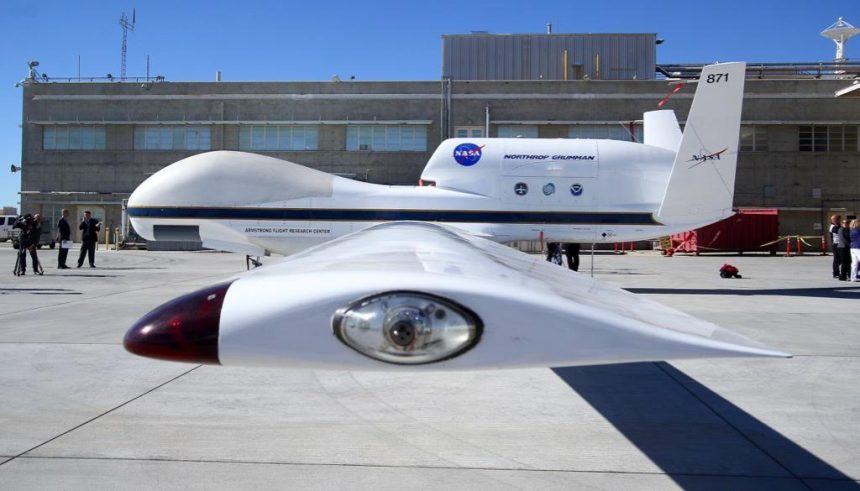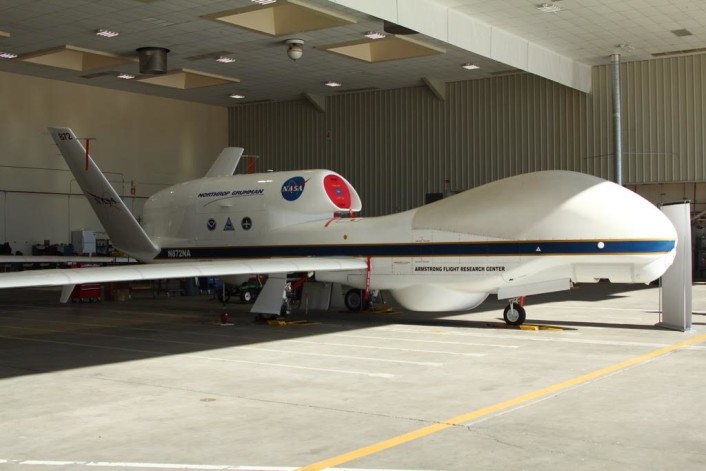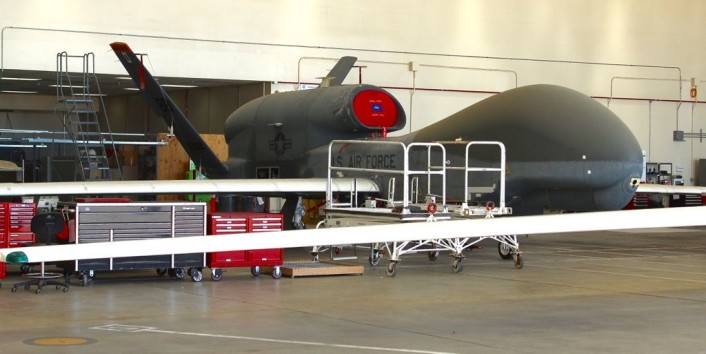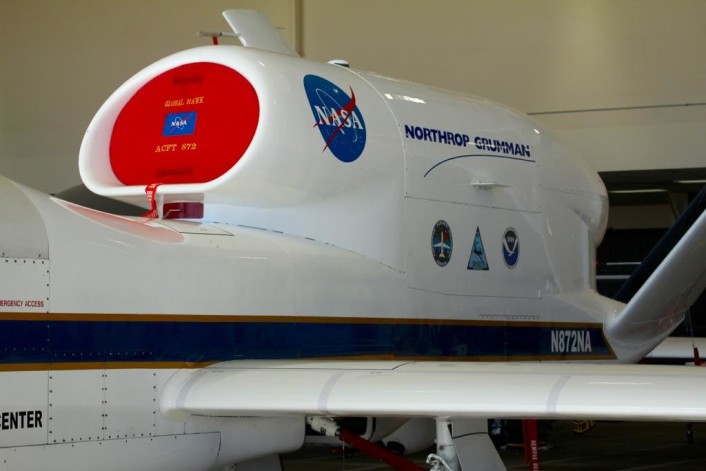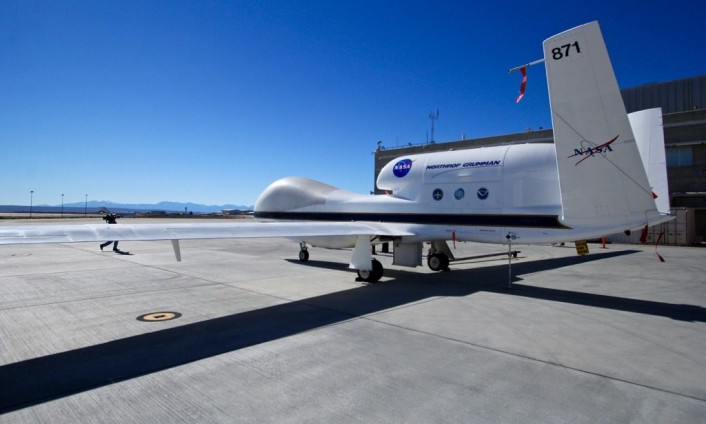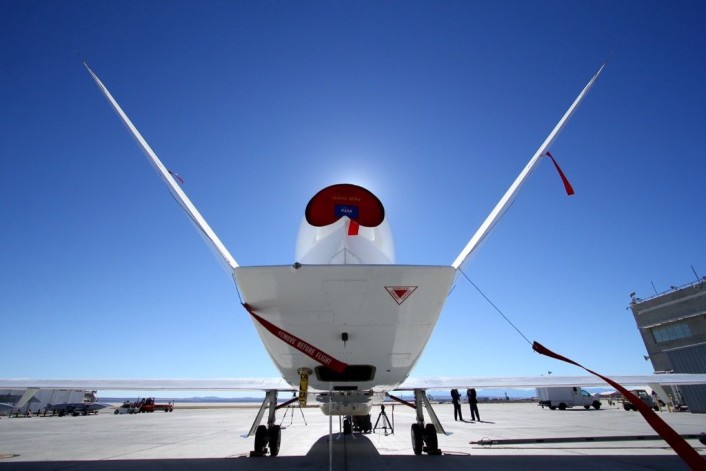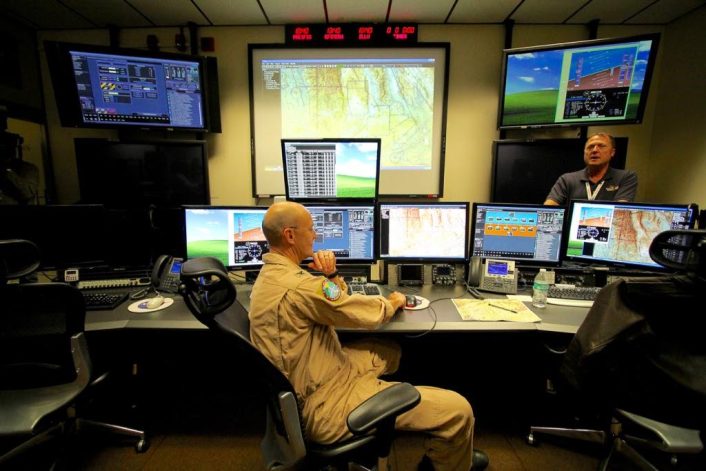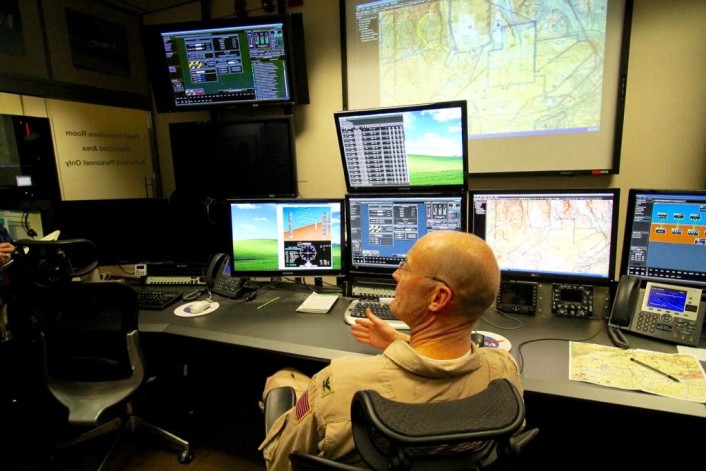NASA operates the giant Northrop Grumman Global Hawk drone to collect weather data.
On Feb. 5, NASA showed off its newest and smartest unmanned Global Hawk aircraft to reporters at NASA’s Armstrong Flight Research Center located on Edwards AFB, CA.
Shorealone Films photographer Matt Hartman went there to report about the NASA’s Global Hawk fleet.
These aircraft have been helping NOAA scientists, researchers and forecasters with gathering weather information from altitudes and conditions not suitable for humans.
The missions tasked by these aircraft can last almost 24hours without refueling.
The Sensing Hazards with Operational Unmanned Technology (SHOUT) project led by the NOAA Unmanned Aircraft System (UAS) Program, will deploy the NASA Global Hawks carrying a suite of meteorological sensors and deploying dropsondes during four research flights in February.
According to the NASA website, the agency acquired its three drones from the U.S. Air Force. These are among the very first UAS (unmanned Aerial Systems) built under the original Global Hawk Advanced Concept Technology Demonstrator development program sponsored by DARPA (Defense Advanced Research Projects Agency).
The Global Hawk is a gigantic drone: 44 feet in length it has a wingspan of more than 116 feet, a height of 15 feet, and a gross takeoff weight of 26,750 pounds, including a 1,500-pound payload capability. It is powered by a single Rolls-Royce AE3007H turbofan engine and features a distinctive V-tail.
The engine cover, aft fuselage and wings are constructed primarily of graphite composite materials; the center fuselage is made of aluminum, whereas various fairings and radomes feature fiberglass composite construction.
NASA’s Global Hawks made the headlines last week, after a hacker under the name of @CthulhuSec and the hacking group AnonSec started posting massive data belonging to NASA on Pastebin: such leaked data included around 150 GB of drone logs as well as 631 aircraft and radar videos along with 2,143 email address of NASA employees.
Interestingly, not only did the hacking group exfiltrate data from NASA’s network, but they also claim to have achieved “semi-partial control” of one of the agency’s Global Hawk drones by replacing the original .gpx file (containing the aircraft’s pre-planned route) with one crafted to direct it along a different route; a claim that has been denied by NASA.
This is not the first time civil or military drones are hacked.
The Intercept has recently reported that GCHQ and NSA compromised video feeds from Israeli drones from a base in Cyprus.
Previously, Iran claimed to have captured a CIA’s RQ-170 Sentinel drone by hijacking it.
U.S. Air Force Predator drones were reportedly infected by a malware that captured all the operator’s keystrokes in 2011.
All images: Matt Hartman

